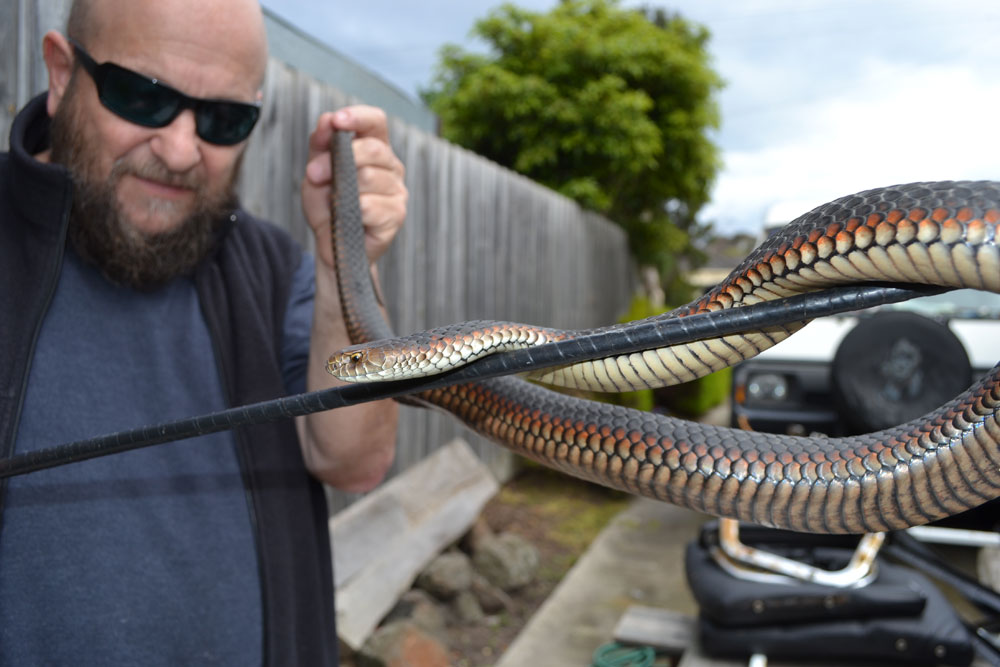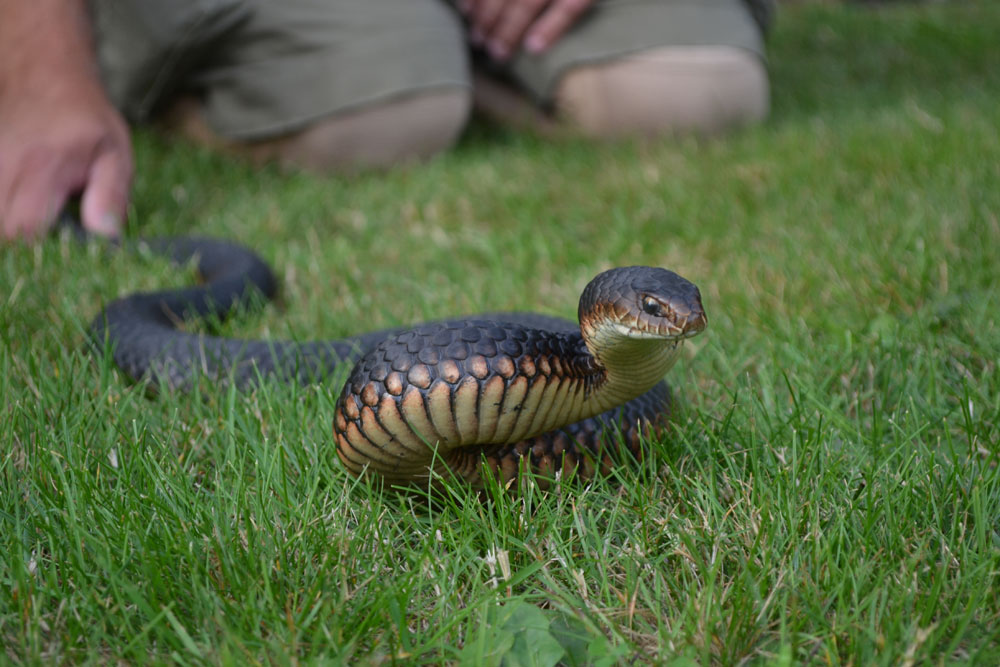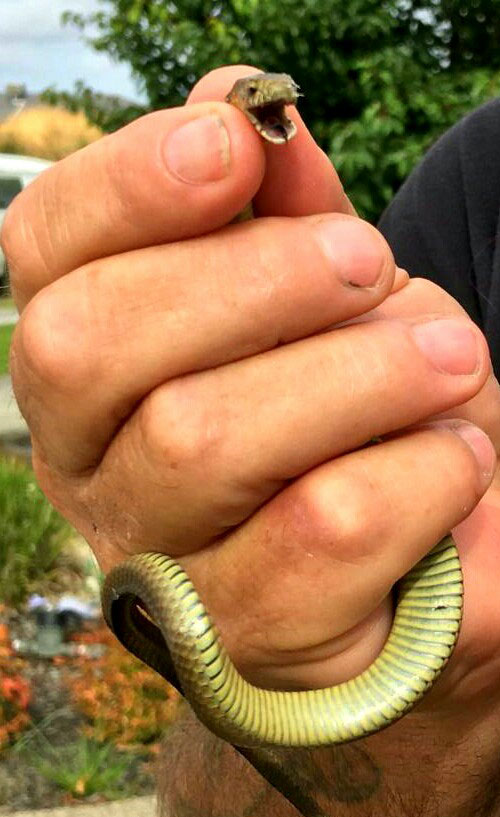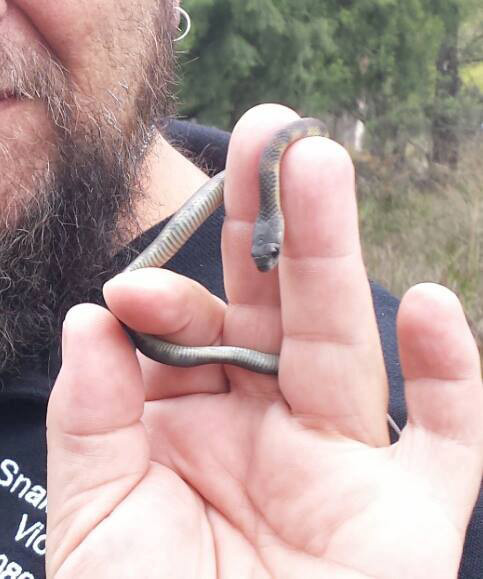
Barry Goldsmith, a Victorian snake catcher and conservationist, loves all Australian native animals, particularly snakes. For more than 30 years he has made it his business to rescue and relocate Australia’s venomous snakes while educating people to dispel the myths surrounding them and to reduce the fear many people have of what he believes are a beautiful and necessary part of our environment.
Like all Australian native animals, snakes are protected so it’s illegal to kill them. ”Almost every second person I talk to has a story about how they killed a snake and it’s just not necessary,” Barry said. “If they’ve got the time to go and grab a shovel, then their life is not in danger and they’ve got time to call a snake catcher to have it removed and taken to a safer environment. Killing a snake can attract a fine of more than $6000.”
He said trying to remove or kill a snake is very dangerous and it’s often when people are bitten. “Cutting off the snakes head is dangerous and really, really cruel because it doesn’t die straight away. It remains alive for about 15 minutes watching you. People then often bend down to pick up the severed head and are bitten.
“There is no evidence of a snake attacking anyone without a reason; dogs and humans are not on their menu as food items so they have no reason to attack anyone. They are easily scared and very scared of us. If you scare a snake the first thing it will do is quickly move away from you. If it’s cornered, it will attempt to bluff you by puffing out its neck to make it look larger. If you persist on engaging with it and the snake has no other means of escape, then it could be dangerous for whatever or whoever is involved.”

Snakes are protected because they are essential to the health of our natural environment. “If there were no snakes, the environment would suffer,” Barry said. “We would be completely overrun with rodents and other species they prey on. In many areas, they are an alpha predator and if you take an alpha predator out of the environment then you’d have a lot of ecological problems. Snakes are a sign the environment is healthy.”
He said some people try to keep snakes away from their house or garden using electronic devices or chemicals, which he believes are a scam. “They don’t work. Ideally you don’t want to give snakes too much cover. If you’ve got low lying shrubs in one area and a bit of rubbish in another area, the snake is going to go from one to the other. They don’t like to be out in the open because their main predators are large birds. Rubbish, long grass, standing water and rodents are very attractive to snakes. If you have pets though, it’s a good idea to have a place for a snake to hide so if it’s chased it has somewhere to go, which will save the life of the snake and the pet.
“I know for many people having short grass and only a few plants may not be practical because everyone enjoys having bushy or native gardens with water features to attract birdlife. They should have that, but they need to be aware that snakes are attracted to it too. In a dry area during a dry time of the year, snakes need to drink so they will also be attracted to swimming pools, water troughs and people watering plants and they are excellent swimmers. You won’t see a snake on a really hot day; they usually come out then early in the morning or late in the evening.

“There are some resident snakes. If they find a nice habitat with lots of food and water, shelter and they feel safe, they may hang around but nine times out of ten, they are just passing through, so if they are left alone, they will often just move on.
“Snakes don’t have ears, they are deaf so you can scream till the cows come home and it won’t make any difference to a snake nor does stomping the ground. You’d have to be a herd of cattle or horses to create enough vibration to chase away a snake. They have poor eyesight but can see over short distances and they can detect slow movement, which is how they catch their prey. If you keep perfectly still, they will have trouble focusing on you. They also have heat receptors and can pick up heat radiation.
“The only time you are likely to be bitten by a snake apart from engaging with it in some way, is if you actually step on it, but if you wear boots, long pants and watch where you walk you’ll never be bitten. If you are walking through long grass, grab a long stick and use it to part the grass before you put your foot down. That way you are giving the snake notice before you step giving him the chance to move along.”

Barry said many people believe baby or juvenile snakes are more dangerous than adults. “The juvenile snake has the exact same toxic venom as its parents but it has small fangs and venom glands so it’s dangerous, but less dangerous than an adult. Some people believe adult snakes will only give them a dry bite. While both adult and young snakes do sometimes give dry bites, it’s not something anyone can rely on.
“Also when some people see a young snake, they believe the mother is close by but most snakes are live bearers and as soon as black snakes, copperhead snakes or tiger snakes are born, they all go in different directions. Snakes don’t have any maternal instincts. Eastern brown snakes lay eggs but leave afterwards.
“People will often say ‘I have blue tongue lizards so I won’t have any snakes’, which is a common myth. I quite often find blue tongue lizards with snakes. Another myth is that snakes are attracted to milk and some people think they can’t cross kerosene or oil but they can.
“I have also often heard people say that a snake chased them, but snakes don’t chase humans or dogs. A snake that feels threatened will have a couple of lunges at you to get you moving and while you are running away, it will turn around and make it’s retreat.

“Red-bellied black snakes are very gentle. I once had a black snake swim over to me while I was floating down a river on a rubber tyre. It rested its head on my leg for a while and then kept on going. Copperheads are very shy and gentle. They always stay low to the ground and they eat tiger snakes. Tiger snakes have a bad reputation for being aggressive but they aren’t. They do prey on birds and can sometimes be seen in trees.
“The Eastern brown snake is considered the most dangerous snake in Australia simply because its main prey is rodents and wherever you have humans you have mice and rats. The eastern brown snake is not as shy and it will follow the scent of its prey and not really care about what is going on around it. They are very common out in the bush and a lot of people try to kill them, which is often how they get bitten. They are the most common snake to be killed and it’s why they are responsible for the most deaths.
“In Northern Australia we have coastal taipans, which have caused very few deaths and in South Australia and Queensland there are inland taipans, which are the most venomous snake in the world but they have never killed anyone.”
Barry said there are many things to be more wary of in Australia than snakes. “Many snake fatalities are caused by people not looking where they are walking and stepping on them and not knowing the first aid needed when they have been bitten. If you run around screaming after you’ve been bitten by a snake you’ll work the venom though your body much faster than if you remain still. Don’t wash or clean the bite, apply a compression bandage and call an ambulance. If you have the compression bandage on properly it will instantly give you approximately eight extra hours.
“Very few snake bites result in a fatality. In Australia each year an average of 3000 people are bitten and of those only one or two are fatalities. Many of them could have been avoided with the right education and first aid.”
Barry has been catching venomous snakes for around forty years and in all that time he has never been bitten by any of them. “Pretty much everything else has bitten me,” he said, “koalas, wombats, possums and sea birds. I’ve been bitten many times by pythons and I’ve been bitten by a white lipped snake and a little whipped snake but their bite is like a bee sting. Unless someone has an allergic reaction to their bite, it just becomes itchy.”

Barry removes and relocates several hundred snakes back into the wild each year. When he catches a snake, he grabs it by the tail and uses a hook to keep the other end away from his body and places it in a special bag. He doesn’t recommend that anyone copy him and try to do the same. “In the early days we didn’t need to have licenses and insurance and I did it then for the love of it. Someone would call me up and say they had a snake, so I’d call around to collect it and they would give me a cup of tea or a beer and that was it.”
He said fear of snakes is a problem. “If people could get over their fear of snakes then that’s half of my job done. I spend most of my days trying to educate people that snakes are not out to get them, they are not evil killing machines. I show people the snake when I’ve caught it and sometimes by the time I leave they’ll say it’s a beautiful animal. Quite often people contact me after watching my videos on my Facebook page and say it has changed their attitude totally and they’re not scared any more.
“I want people to respect them. This is Australia and it doesn’t matter where you are, even if you are in the middle of the city, there’s a chance you’ll see a venomous snake. They are beautiful, but they are deadly animals so never interact with them. Never touch them and if you do see one just take a few steps back. If a snake sees you stepping back, he’s not going to come forward.”
For more information
call Barry on: 0408 067 062 or visit http://snakecatchervictoria.com.au/
